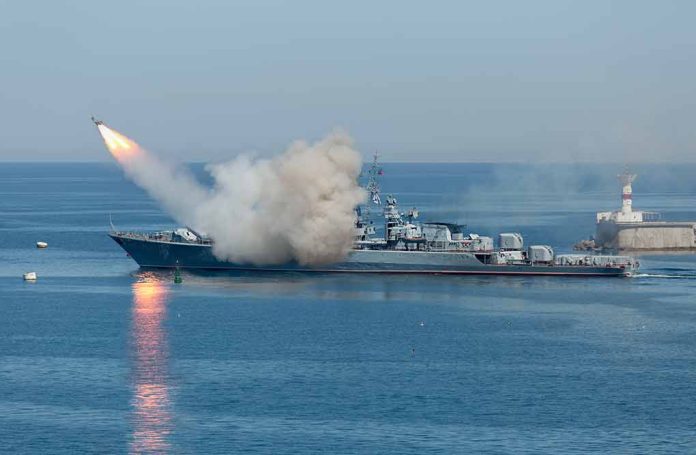
Japan boldly challenges China’s dominance by sailing its destroyer Takanami through the contested Taiwan Strait just days after Chinese fighter jets endangered a Japanese patrol aircraft over the Pacific Ocean.
Key Takeaways
- Japanese destroyer Takanami traversed the Taiwan Strait on June 12 for over 10 hours before conducting joint exercises with the Philippine Navy in the South China Sea
- This marks Japan’s third Taiwan Strait passage within a year, signaling increasing resistance to Chinese territorial aggression
- The naval maneuver directly followed a dangerous encounter where Chinese fighter jets flew dangerously close to a Japanese surveillance aircraft
- Japan is strategically aligning with the United States and other allies to assert freedom of navigation rights amid China’s expanding maritime claims
Japan’s Strategic Naval Response to Chinese Aggression
The Japanese Maritime Self-Defense Force destroyer Takanami delivered a clear message to China by navigating through the Taiwan Strait on June 12, spending more than 10 hours in transit through this contested waterway. This bold move came shortly after Chinese fighter jets conducted dangerous intercepts of a Japanese patrol aircraft over the Pacific Ocean, marking a significant escalation in regional tensions. The Takanami entered the strait from the East China Sea and proceeded southward between mainland China and Taiwan, while Chinese military forces reportedly tracked and monitored the vessel throughout its journey.
This transit represents the third known passage by a Japanese naval vessel through the strategically vital Taiwan Strait within the past year, with previous crossings in September 2024 and February 2025. Despite the significance of these movements, the Japanese government has maintained its policy of not officially acknowledging these activities, allowing the actions to speak for themselves. The increasing frequency of these passages indicates Japan’s shifting strategic posture toward more assertive freedom of navigation operations in response to China’s growing territorial ambitions in the region.
Expanding Military Cooperation in the South China Sea
After completing its Taiwan Strait transit, the Takanami proceeded to waters off the Philippines’ main island of Luzon, where it participated in joint maritime exercises with the Philippine Navy in the South China Sea that Saturday. These coordinated naval drills represent a crucial element of Japan’s strategy to strengthen military partnerships with other nations facing similar challenges from Chinese maritime expansion. By conducting these exercises in the disputed South China Sea, Japan demonstrates its commitment to maintaining a free and open Indo-Pacific region while building a coalition of like-minded partners.
Japan’s approach reflects President Trump’s emphasis on allies taking greater responsibility for regional security while maintaining strong partnerships with the United States. The joint exercises serve as a practical demonstration of military interoperability between Japan and the Philippines, enhancing their collective ability to respond to potential threats and contingencies. This cooperative engagement also sends a powerful signal about Japan’s determination to protect international shipping lanes and preserve access to vital maritime routes that are essential for global commerce and regional stability.
The Changing Landscape of Regional Security
Japan’s increasingly assertive naval operations represent a significant shift in its traditional defensive posture, as Tokyo adapts to meet the challenges posed by China’s expanding military capabilities and territorial claims. By sailing through the Taiwan Strait and conducting exercises in the South China Sea, Japan is joining the United States and other allies in asserting the principle of freedom of navigation in international waters. This alignment of democratic maritime powers presents a united front against Chinese attempts to redefine maritime boundaries and establish control over critical waterways.
The timing of Takanami’s transit—immediately following a dangerous encounter between Chinese fighter jets and a Japanese surveillance aircraft—underscores the connection between air and maritime security challenges in the region. China’s increasingly aggressive intercepts of Japanese aircraft, combined with its extensive naval activities, reveal a pattern of escalating pressure tactics designed to test Japan’s resolve and operational boundaries. Japan’s response demonstrates a clear determination to maintain its presence in these contested areas despite Chinese opposition and intimidation efforts.







